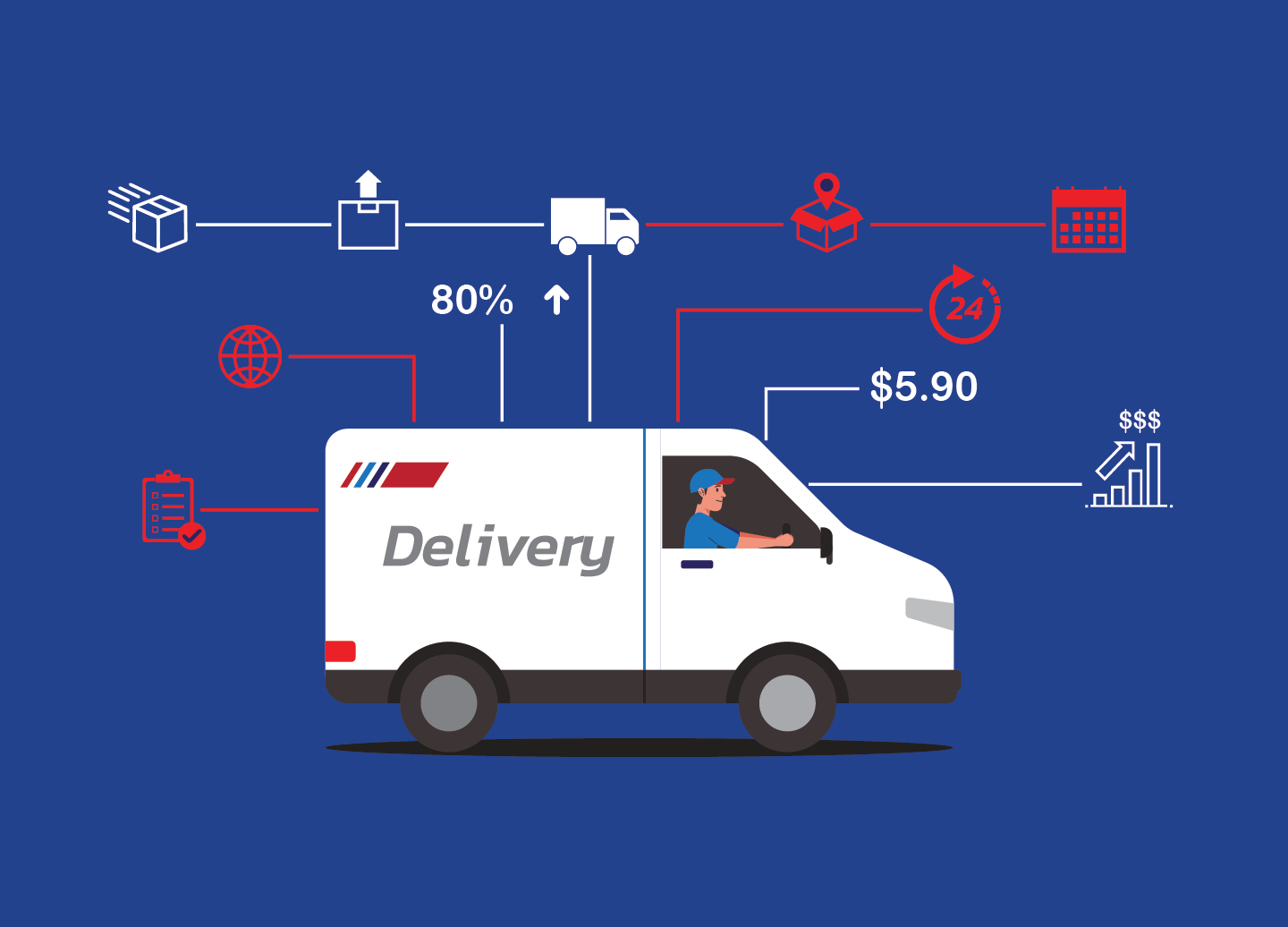ProShip shipping experts share how the new USPS rate adjustments will affect your shipping costs.
The USPS recently announced temporary price adjustments for several package products for the upcoming 2021 peak season. These increases are scheduled to take effect on October 3, 2021, mirroring the UPS second round of peak surcharge increases.
The planned increases will affect both commercial and retail domestic competitive shipping which includes Priority Mail Express (PME), Priority Mail (PM), First-Class Package Service (FCPS), Parcel Select, USPS Retail Ground, and Parcel Return Service. The increases will run through the holidays with an expiration of December 26, 2021. Foreshadowed by the “Delivering for America” 10-year $40 Billion plan, the USPS has plans to invest in their infrastructure and improve their service levels with these temporary rate increases.
2021 Peak Season Rate Adjustment Highlights
Priority Mail, Priority Mail Express, Parcel Select Ground and USPS Retail Ground:
- $0.75 increase for PM and PME Flat Rate Boxes and Envelopes.
- $0.25 increase for Zones 1-4, 0-10 lbs.
- $0.75 increase for Zones 5-9, 0-10 lbs.
- $1.50 increase for Zones 1-4, 11-20 lbs.
- $3.00 increase for Zones 5-9, 11-20lbs.
- $2.50 increase for Zones 1-4, 21-70 lbs.
- $5.00 increase for Zones 5-9, 21-70 lbs.
In addition, the following products have these increases:
- FCPS Commercial will increase from $3.01 to $3.31
- FCPS Retail will increase from $4.00 to $4.30
- Parcel Select Lightweight (DSCF and DNDC) will increase from$2.55 to $3.55
- Parcel Select DSCF will increase from $4.84 to $5.84
- Parcel Select DNDC will increase from $6.85 to $7.85
- Parcel Return Service will increase from $3.21 to $4.21
While both UPS and FedEx have prepared for peak season with investments, and more importantly, surcharges, it’s likely that there still won’t be enough capacity in their networks. UPS’s CEO, Carol Tomé, cited peak during the company’s Q2 earnings call that daily package delivery demand will eclipse capacity by 5 million packages.
All shippers should prepare for an expensive peak season. In addition, 2020 pain points of inflexible systems, carrier capacity constraints, and a lack of visibility are still fresh in the minds of shippers.
ProShip Tips to Better Prepare for Peak 2021
Stay Flexible
Flexibility and agility are extremely important given the uncertainty that the past year has shown and what is still yet to come in 2021. A crucial part of staying flexible is having a multi-carrier system that allows you to adapt to the ever-changing shipping ecosystem. The ability to update complex business rules as needed [Everything You Need to Know About Complex Business Rules – In Five Minutes] and employ carrier volume balancing strategies [Here’s Why: Single-Carrier Parcel Shipping Strategies are Dead] are just some of the benefits of using a multi-carrier shipping software system.
Anticipate Carrier Capacity Issues
2020 saw carriers restricting the capacity available to shippers and as evidence by Carol Tomé’s quote from earlier, 2021 will likely have the same issues. To combat these obstacles, shippers should look to diversify their carrier mix [Top 4 Myths About Carrier Diversification]. The right mix will fit their shipping profile as needed – whether that is national, regional, or last-mile and will reduce dependency on any one carrier during a time when stability is key.
Utilize All Fulfillment Sources
This strategy pairs well with the first 2. With the flexibility to diversify your carrier mix, you open up multiple avenues for your additional capacity. When retailers employ multi-carrier shipping software to expand their inventory sources, whether through additional Distribution Centers, Ship-From-Store, Manufacturing Vendors, or Third-Party Logistics (3PL) providers, they can help maintain the delivery promised made during the shopping cart. With enhanced visibility into inventory locations and a software to make automated decisions about where inventory is shipping from, shipping distance is shortened and cost savings are possible. [Learn more: Converge Session Trending Topics: How to Achieve Omnichannel Fulfillment Success]
Justin Cramer, Co-Founder of ProShip, cautions shippers, “Those who haven’t already secured carrier capacity are set to face a difficult peak season.” He goes on to say, “There’s still opportunity for shippers to utilize their stores as forward inventory sources. Shippers who have prepared for peak with multi-carrier shipping software, as well as intentional exploration of carrier diversification and investments in omnichannel fulfillment will outlive their competition and thrive during the upcoming expensive peak season.”
Looking for more help with the upcoming peak season? Contact us to learn more about the number one parcel system in speed, compliance, reliability and experience!

 Back to Blog
Back to Blog






